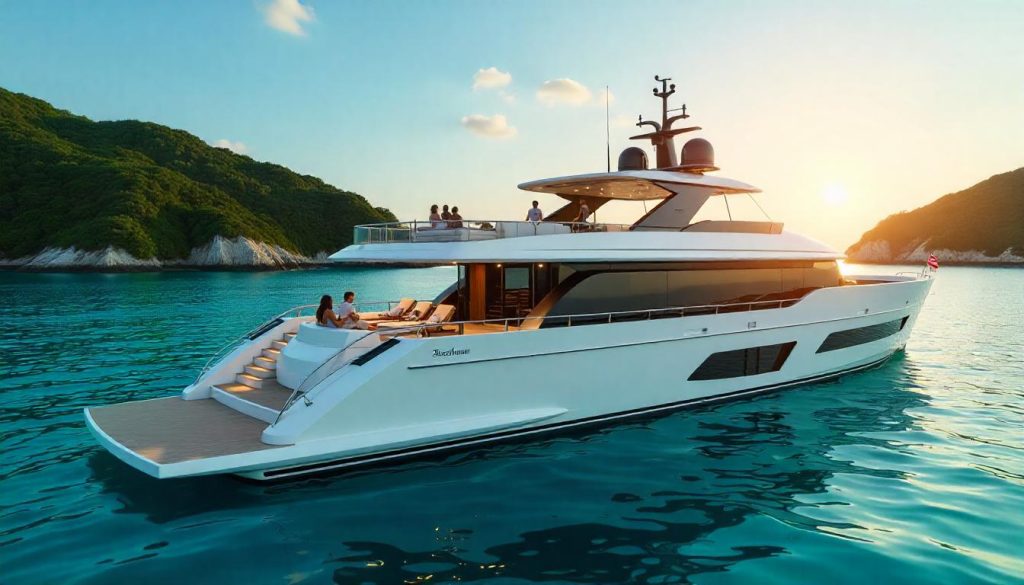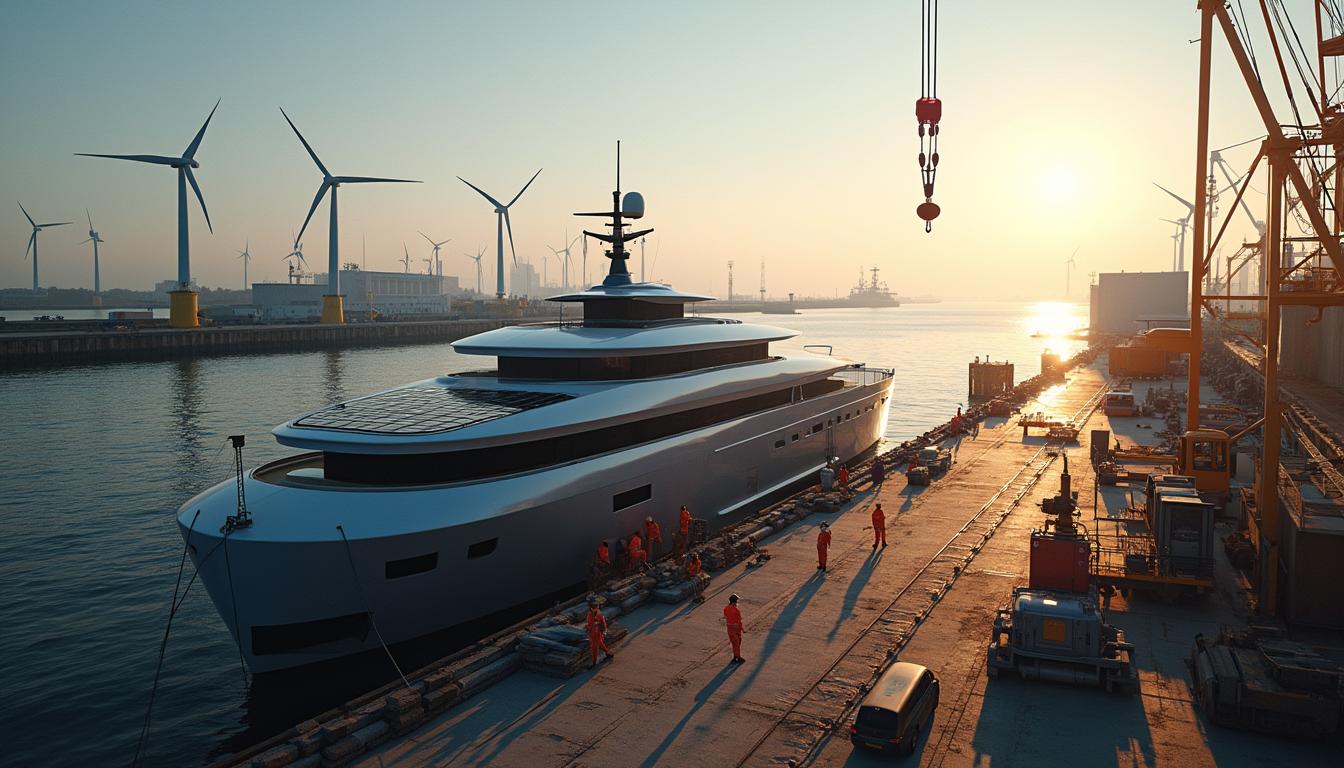The yachting industry, long synonymous with luxury, is at a crossroads, and ICON Yachts is leading the way with The Path to Sustainability: How ICON is Changing Yachting. From its shipyard in Harlingen, Netherlands, ICON has embraced a mission to make yachting greener, blending Dutch precision with eco-conscious innovation since its founding in 2005. By powering its facilities with renewable energy and crafting superyachts with hybrid systems, ICON is proving that opulence and environmental responsibility can coexist. This article uncovers how ICON Yachts is reshaping yachting’s future, one sustainable vessel at a time.
A Vision Born of Necessity
ICON Yachts didn’t set out to simply build yachts—it aimed to redefine them. The Path to Sustainability: How ICON is Changing Yachting began taking shape as environmental concerns grew louder in the maritime world. By 2021, the shipyard transitioned to 100% renewable energy, a bold move that signaled its commitment to reducing its carbon footprint. This shift wasn’t just symbolic; it was a practical step toward sustainable construction.
The decision reflected a broader industry awakening. Yachting’s reliance on fossil fuels and resource-heavy builds had drawn scrutiny, prompting ICON to act. For instance, its adoption of ISO 14001 standards ensures every process prioritizes the planet. Consequently, ICON’s journey toward sustainability became a blueprint for others to follow.
The Path to Sustainability: How ICON is Changing Yachting Through Energy
At the heart of ICON’s transformation is its energy strategy. Since switching to wind and solar power, the Harlingen shipyard has slashed emissions tied to production. This green energy powers the creation of yachts like MISSION, an explorer vessel designed to protect the oceans it sails. With solar panels and hybrid propulsion, MISSION embodies ICON’s sustainable ethos.
Moreover, this approach extends beyond the yard. ICON’s yachts are built to operate efficiently, reducing fuel use on the water. For example, MASTER, a 70-meter conversion, uses a diesel-electric system to cruise silently, minimizing noise pollution. As a result, The Path to Sustainability: How ICON is Changing Yachting starts with energy innovation that ripples from construction to operation.
Conversions as a Green Cornerstone
Conversions are a key pillar of ICON’s sustainable path. Rather than starting from scratch, the shipyard reimagines existing vessels, cutting down on raw material demands. Project MASTER, born from an offshore rescue ship, retained 95% of its original hull, extended with precision to create a modern superyacht. This process saves resources and breathes new life into maritime relics.
Additionally, ICON recycles discarded parts, ensuring minimal waste. Project UFO, another conversion, transforms a commercial platform into a luxurious retreat with over 1,000 square meters of space. By repurposing, ICON reduces the environmental toll of yacht building. Thus, conversions are a shining example of The Path to Sustainability: How ICON is Changing Yachting.
Technology Driving Change
Technology fuels ICON’s sustainable revolution. Hybrid propulsion systems, like those in MASTER and MISSION, blend diesel and electric power for efficiency. These systems cut emissions and allow yachts to operate in sensitive ecosystems without disruption. For instance, MASTER’s Voith Schneider propellers enhance maneuverability while lowering fuel use.
Furthermore, ICON integrates solar panels and battery storage to harness clean energy. MISSION uses these to supplement its power needs, reducing reliance on fossil fuels. The shipyard’s use of dynamic positioning also prevents anchor damage to seabeds. Therefore, The Path to Sustainability: How ICON is Changing Yachting hinges on tech that marries performance with planetary care.
The Path to Sustainability: How ICON is Changing Yachting with Purpose
ICON’s yachts aren’t just green—they’re purposeful. MISSION doubles as a research platform, equipped with labs for marine science. This dual role transforms leisure into a force for good, supporting efforts like ocean cleanups and climate studies. Similarly, MASTER offers expedition capabilities, with tenders and a helideck for remote exploration.
For example, partnerships with groups like The International SeaKeepers Society amplify MISSION’s impact, turning voyages into conservation missions. Meanwhile, BATON ROUGE, a 46-meter build, balances luxury with efficiency, proving sustainability enhances experience. As a result, ICON’s focus on purpose redefines yachting’s role in the world.

Operational Sustainability
Sustainability doesn’t end at launch—ICON ensures its yachts operate responsibly. Crews are trained in eco-friendly practices, from energy conservation to waste reduction. MISSION’s onboard water purification eliminates plastic bottle use, while MASTER’s hybrid system optimizes fuel efficiency across its 6,000-nautical-mile range.
Moreover, ICON designs yachts to leave minimal traces. MISSION’s waste systems prevent ocean pollution, a critical feature for an industry often criticized for environmental disregard. For instance, every system is tested to meet stringent green standards. Consequently, operational sustainability is a vital chapter in The Path to Sustainability: How ICON is Changing Yachting.
The Path to Sustainability: How ICON is Changing Yachting Through Influence
ICON’s efforts resonate beyond Harlingen, influencing the broader yachting industry. Its success with conversions and green tech inspires other shipyards to rethink their methods. MASTER’s unveiling at the Monaco Yacht Show in 2021 showcased how sustainability can elevate luxury, sparking interest in hybrid designs.
Additionally, ICON’s visibility at events like the Palm Beach International Boat Show amplifies its message. Other builders now explore repurposing and renewable energy, following ICON’s lead. For example, MISSION’s eco-mission has spurred a wave of purpose-driven yachts. Thus, ICON’s sustainable path is reshaping industry norms.
Overcoming Green Challenges
Going green isn’t without hurdles. Retrofitting hybrid systems into conversions, like MASTER, requires significant investment and engineering finesse. Moreover, convincing a luxury-focused market to prioritize sustainability takes persuasion. However, ICON tackles these challenges with ingenuity and resolve.
For instance, the shipyard offsets costs with long-term savings—hybrid yachts reduce fuel expenses over time. Partnerships with designers and adventure firms like Cookson Adventures bolster its credibility, proving green yachts are desirable. As a result, ICON turns obstacles into opportunities, solidifying its sustainable leadership.
Community and Collaboration
ICON’s path to sustainability involves its community. The shipyard employs local talent in Harlingen, fostering economic growth while keeping operations eco-friendly. Collaborations with global experts—like Espen Øino for design and Cookson for expeditions—enhance its yachts’ impact. For example, MASTER’s expeditions with Cookson blend adventure with purpose.
Furthermore, ICON engages owners who share its vision. MISSION’s client sought a yacht for environmental good, while BATON ROUGE’s owner valued efficiency. This alignment ensures sustainability isn’t just a buzzword—it’s a shared commitment. Thus, collaboration strengthens ICON’s green journey.
A Sustainable Legacy
Ultimately, The Path to Sustainability: How ICON is Changing Yachting is about legacy. From ICON to UFO, each yacht reflects a dedication to innovation, responsibility, and beauty. These vessels aren’t just modes of travel—they’re statements of a better way forward. As ICON continues to evolve, its sustainable path promises enduring change.
For owners, ICON offers yachts that align luxury with conscience. For the industry, it sets a standard where green practices enhance prestige. With every launch, ICON proves that yachting can tread lightly on the planet, forging a future where sustainability and splendor sail hand in hand.


